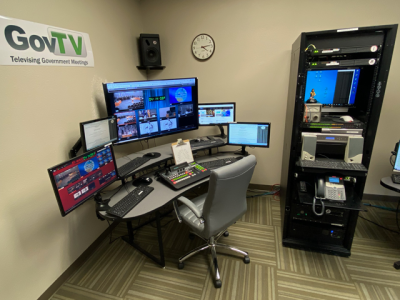By Steve Nathans-Kelly – Sept. 25, 2020 – In recent months, remote (aka remote-integration, or REMI) video production workflows have evolved from a thrifty and nimble alternative to all-hands-on-the-same-deck production to a practical necessity for many producers and streaming professionals. And where on-site, in-person production persists—or has, in some fashion, returned—it’s generally implemented with smaller and deliberately distanced crews and often augmented with remote workflow elements.
Even in the absence of traditional, in-person live events, live streaming surged in several verticals even in the months of the tightest lockdowns, partly because ongoing business communications demanded it, but also because advances in the technology that undergirds remote production were solidly in place before off-site streaming workflows became the only game in town. Widely available telecommunications infrastructure, Wi-Fi-ready cameras, and proven IP-based workflows have freed production crews from the restraints of wired proximity and enabled them to accomplish most production tasks at a far remove from the site of content creation or acquisition.
To get a snapshot of the current state of remote and distanced production, I spoke with a few streaming professionals and discussed their evolving production workflows and how they’ve adapted to in-flux production realities and embraced emerging opportunities in distanced and remote production.

GovTV: Who Needs Remote Control?
San Diego-based GovTV never underwent a migration to remote production and streaming—its operations were remote from the get-go. Built to offer flexible, turnkey, scalable, cloud-based, C-SPAN-style live-streamed coverage to government agencies and other organizations holding public meetings, GovTV’s BroadcastManager systems require little more on-site footprint than the one or more mounted, remotely controlled, robotic cameras its clients request.
Among other regional clients, GovTV has been working with the city of Lancaster, Calif., since 2017, streaming all of its city council meetings (Figure 1, below). The BroadcastManager system is based on technology from Broadcast Pix, which provides live, multiformat switching; customizable multiview; and robotic camera and external device control. Meetings are delivered online through Granicus, a streaming platform expressly designed for streaming government meetings.
![Broadcast Pix, Inc. [US] Logo](https://broadcastpix.com/wp-content/uploads/2018/05/broadcastpix-inc-sticky-logo7.png)